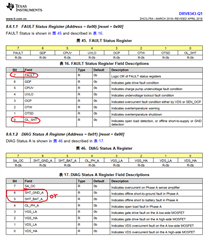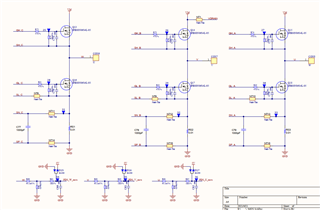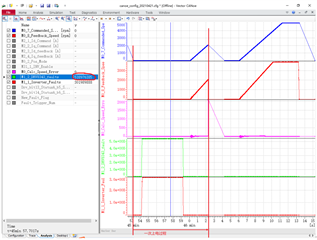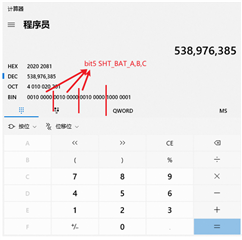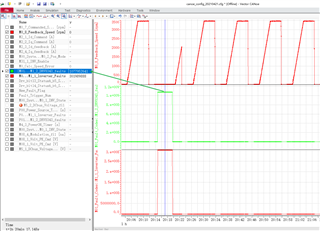Hi Team,
Application: The DRV8343S driver chip is used for the motor control of the 24V automotive electronic water pump. The schematic diagram is as follows.
Before PWM starts, send the open circuit or short circuit protection detection enable bit to the DRV8343S chip through SPI. The driver chip will occasionally report a short circuit to the power supply (SHT_BAT) or a short circuit to GND (SHT_GND).
In the standby mode, write parameters to the register via SPI:
Send 0x7F to the IC2 register, wait for 50ms, and send 0x60 to the IC2 register; a false alarm will occur.
Question:
1. IC2 register, can both short-circuit detection and open-circuit detection be enabled at the same time? That is to write 0x7F, bit3 EN_OLP and bit4 EN_SHT_TST write 1 at the same time?
2. How to choose bit6-5 OLP_SHTS_DLY in IC2 register? Is the delay value: the larger the value, the less likely it is to falsely report the fault? Currently 11b is used, and the fault will be falsely reported when only 10b is used before.
3. In the IC2 register, when bit4 EN_SHT_TST is written to 1, is it required that the motor is completely stationary, or what is the minimum speed (electrical frequency) limit?
4. In the IC2 register, when bit4 EN_SHT_TST is written as 1, is there any requirement for the ambient temperature range? Can the whole temperature range of -40℃~125℃ be detected?
